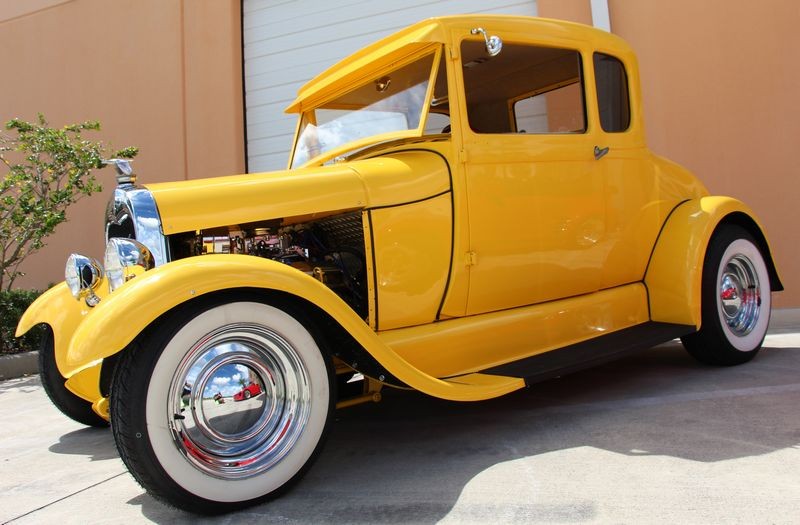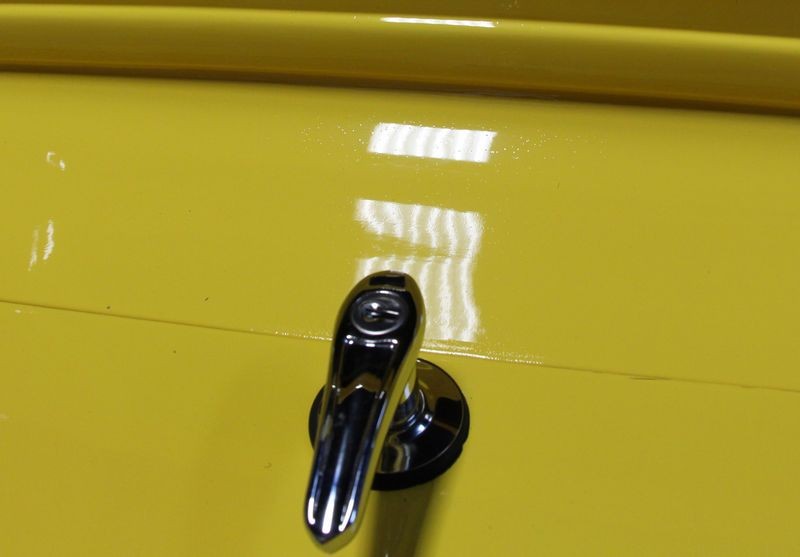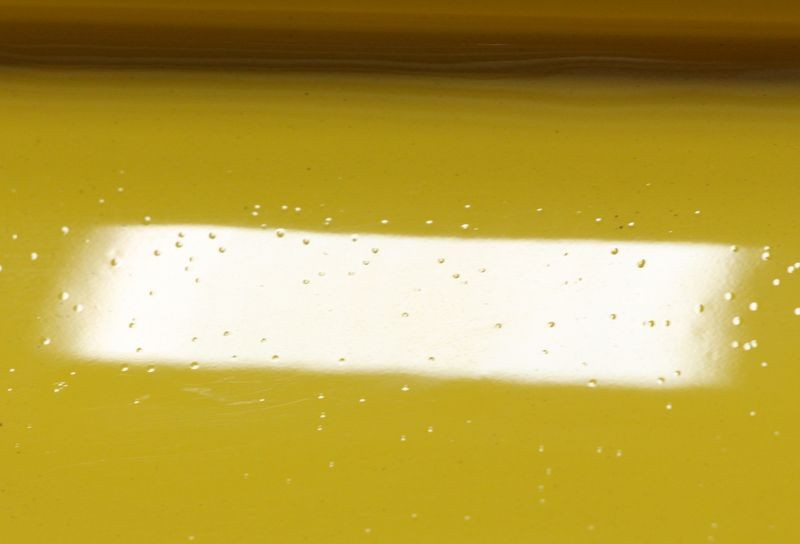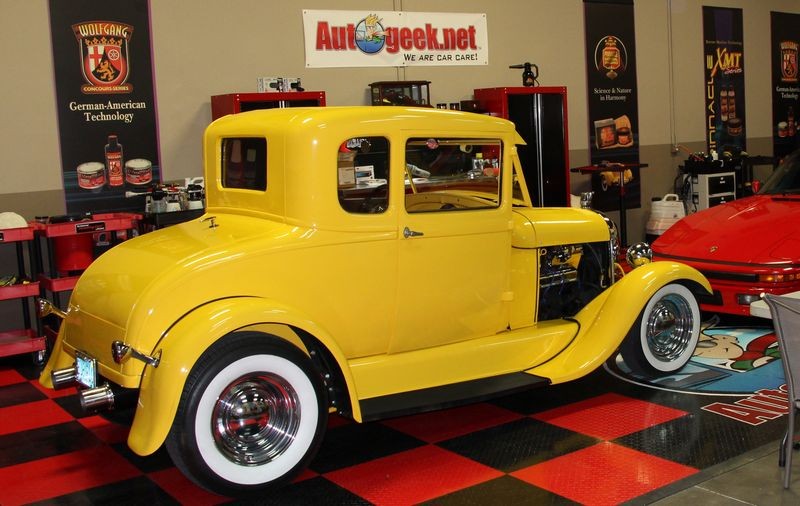Before 2 days a van ( mercedes vito 2005 ) got a new single stage fresh paint. It got sanded down, body filled, sanded, primed, painted white and then painted its original mercedes yellow shade. They got a single stage system from Sikkens.
Somewhere along the line the painter made a mistake and got the hood and some panels full of pop solvent craters.
something like this:
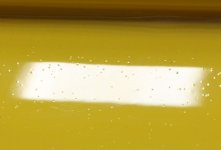
They called me if i could fix it. They didnt want to sanded down and repaint it. Which.. i believe is the best solution, cause these craters are somehow deep.
So they tried to sanded down with 1500,2000 wet but it was time consuming. they didnt want to listen to start with 800/1000/1500/2000 wet, which was my opinion and then buff it.
Now after 4 hours of wet sand with 1500/2000 somehow pop solvent got out of the way but the guy who sanded it , made the whole hood with pig tails. It got buffed and polished but pigtails are way deep now from the sander and its a pain in the but*.
Now they called me again and told me, that i was right and try to save it if i can, otherwise they will have to repaint it.
What is the best aproach for single stage pop solvent and pigtails from your experience? They paint is fresh and single stage , it gets very sticky but at the same time it gives the impression that is very hard.
The whole job is a mess but it is a great oportunity for learning. I got pictures but my camera couldnt catch the pop solvent to see the mess...
Any help is apreciated ,
Thank you
Somewhere along the line the painter made a mistake and got the hood and some panels full of pop solvent craters.
something like this:

They called me if i could fix it. They didnt want to sanded down and repaint it. Which.. i believe is the best solution, cause these craters are somehow deep.
So they tried to sanded down with 1500,2000 wet but it was time consuming. they didnt want to listen to start with 800/1000/1500/2000 wet, which was my opinion and then buff it.
Now after 4 hours of wet sand with 1500/2000 somehow pop solvent got out of the way but the guy who sanded it , made the whole hood with pig tails. It got buffed and polished but pigtails are way deep now from the sander and its a pain in the but*.
Now they called me again and told me, that i was right and try to save it if i can, otherwise they will have to repaint it.
What is the best aproach for single stage pop solvent and pigtails from your experience? They paint is fresh and single stage , it gets very sticky but at the same time it gives the impression that is very hard.
The whole job is a mess but it is a great oportunity for learning. I got pictures but my camera couldnt catch the pop solvent to see the mess...
Any help is apreciated ,
Thank you




